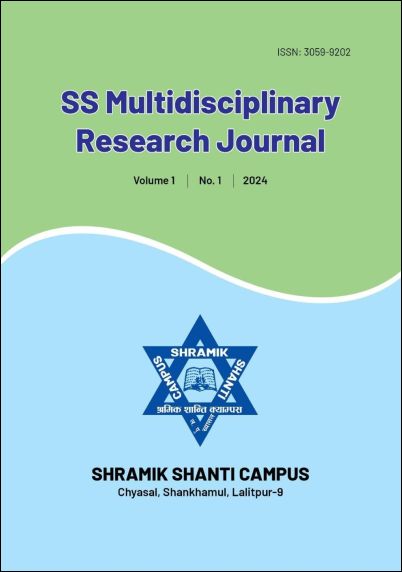Impact of Brick Factory on Socio-economic and Livelihood of People
DOI:
https://doi.org/10.3126/ssmrj.v1i1.71261Keywords:
Livelihood, brick factory, uplift, health hazards, productionAbstract
The means and resources individuals employ to sustain their lives and support their families is called livelihood. This paper aimed to analyze the impact of brick factories on the socio-economic and livelihood of people in Koicha ward no. 22, Bungmati, Lalitpur. The study population was the workers, non-workers, local people, and the local authorities around the brick factories. This study adopted the census method as the sample design and descriptive study as the research design and followed both quantitative and qualitative methods. The respondents were workers in brick factories including 55.6 percent female and 44.4 percent male whereas the mean age of respondents was 47.33 (± 5.03) and the majority of them (88.9%) were 40-45 years old. Most of them were married (83.3%), Buddhist (83.35), and Newars (88.9%). The mean monthly earnings of the respondents was Rs19722.2 and this income was stated as not sufficient by the majority of the respondents (83.3%). They managed their livelihood by different sources rather than their monthly income in different ways. The regression model, which includes years of working in brick factories, earning by land lease to brick factory, and monthly salary as a predictor, is not significant on brick factories impacting positively in the socio-economic and livelihood of people. The R-square and adjusted R-square are 97.2 percent and 88.8 percent explaining the strong proportion of the variance in the dependent variable is due to the independent variables. However, the p-value (0.214) is greater than 0.05 evidenced by the null hypothesis supporting the conclusion that the model is statistically not significant. With the increasing air pollution, less productivity of land, and health problems, respondents viewed brick kilns as the negative aspect whereas due to employment creation, and upliftment of the livelihood some viewed it as the positive aspect. The FGD and KII conducted in the study area resulted in one voice of removing the brick kilns as it has created health problems rather than socio-economic improvement. Further study in this regard has to be conducted to get a closer view of the problems associated with brick kilns.




